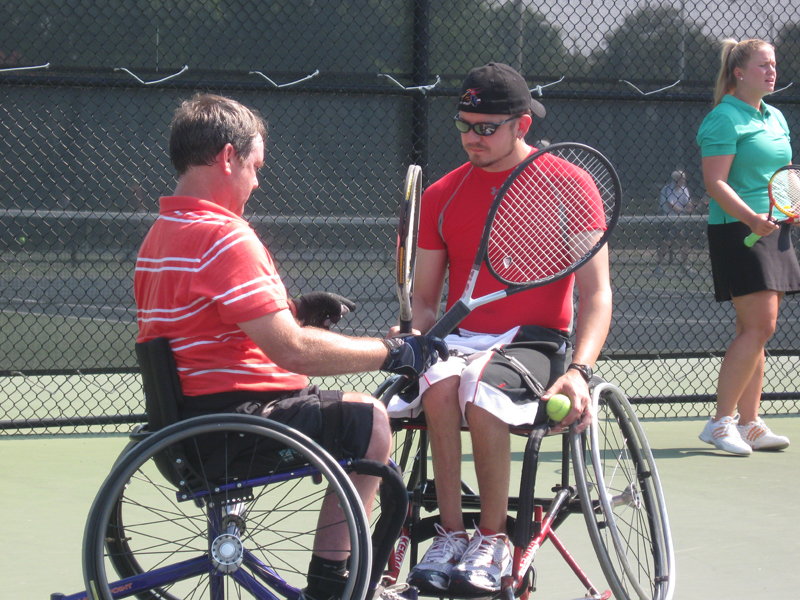APRIL IS…
Alcohol Awareness Month
Autism Awareness Month
Donate Life Month
Minority Health Month
Oral Cancer Awareness Month
——
Governor signs breast density bill
Governor Bob McDonnell signed HB 83, requiring facilities that offer mammograms to notify women if they have dense breasts. Virginia joins only two other states in the U.S. that passed similar bills. The Virginia bill goes into effect in July when Virginia women can expect that additional information following their mammograms.
Not only is it harder to “find” breast cancer in dense breasts, new studies show having dense breast tissue may be an added risk factor for breast cancer.
“It’s important for women who learn they have dense breasts to be especially diligent about their breast health,” says Nina L. Fabiszewski, MD, radiologist at Sentara Leigh and Sentara Norfolk General Hospitals Comprehensive Breast Centers.
Dr. Fabiszewski cautions all women, even those without dense breasts, to continue having their annual mammograms as one of the first lines of defense against breast cancer.
—-
Fresh Squeeze
A compound in citrus fruits may reduce your stroke risk, according to research reported in Stroke, a journal of the American Heart Association.
This prospective study is one of the first in which researchers examine how consuming flavonoid subclasses affects the risk of stroke. Flavonoids are a class of compounds present in fruits, vegetables, dark chocolate and red wine.
“Studies have shown higher fruit, vegetable and specifically vitamin C intake is associated with reduced stroke risk,” said Aedín Cassidy, Ph.D., the study’s lead author and professor of nutrition at Norwich Medical School in the University of East Anglia in Norwich, United Kingdom.
“Flavonoids are thought to provide some of that protection through several mechanisms, including improved blood vessel function and an anti-inflammatory effect.”
—-
Tick of the Lyme Disease Problem
Maybe the guy was just unlucky. He was born lactose intolerant, and had high blood pressure. Then he was bitten by that tick, which made him sick. And then some thugs from the other side of the Alps—did we mention he lived in the Italian Alps?—shot him with an arrow, and it was the arrow that killed him.
He slumped into a niche in the rocks with his left arm crossed way over himself. Nature conspired to embed him in a tomb of ice and there he remained for 5,300 years. In 1991 a team of Austrians chipped him out of the old block and scientists have been having fun with him ever since.
By now the old guy has been subjected to every test known to medical science. The results have provided us with such titillating information as he had brown hair, brown eyes, and type O blood. He had gorged on strips of fried wild goat, and was probably just sitting there when the thugs shot him in the back. That happened in the springtime.
Now about that tick …
Scientists found evidence the guy had the earliest-known case of Lyme disease. First found in Old Lyme, Conn., in 1975, the disease is transmitted by the black-legged tick, commonly known as the deer tick. It is the most common vector-borne disease in the United States and is becoming a problem in Europe and Asia.
Vector-borne disease, according to the Virginia Department of Health, is “an illness caused by an infectious microbe that is transmitted to people by blood-sucking” bugs. That ghoulish tribe includes mosquitoes, fleas, lice, biting flies, mites and ticks. Mosquitoes and ticks do most of that heavy lifting in Virginia.
The black-legged tick is a tiny fellow, often hard to see. Nor is it always possible to realize you are being bitten. Usually associated with warm weather, ticks can be active all year. Mild winters, however, provide the ticks with better survival and reproductive rates.
Considered the most rapidly spreading infectious disease in North America, Lyme disease develops in three stages with symptoms ranging from headaches to abnormal muscle movement and speech problems. It is treatable with antibiotics regardless of the stage.
Lyme disease bacteria originates with white-footed mice. Those mice happen to be the favorite restaurant of black-legged ticks. If ticks can’t find mice they hop on large mammals such as deer. The bacteria does not affect the mice or the deer.
Deer herd populations are on the rise in the U.S. That has fostered the belief that more deer mean more ticks and, ultimately, more cases of Lyme disease. The number of deer is not the problem. The problem is the amount of contact between humans and deer.
Although Lyme disease has been found in every state except Hawaii, 94 percent of the cases come from 12 states. The prime area is a corridor from Maine to Northern Virginia. Another outbreak has been at work in the Wisconsin-Minnesota region.
Confirmed cases in Virginia have ranged from 149 in 2000 to more than 900 in 2010. Most of those cases were found in Northern Virginia. Fueled by this perfect storm of mild winters and contact between humans and deer, the disease is spreading. That is not good news for high population areas such as central Virginia.
—-
Check Presentation
On May 5 the Williamsburg Jaycees will host a miniature golf tournament at Pirates’ Cove Adventure Golf to raise money for DreamCatchers at the Cori Sikich Therapeutic Riding Center. Pictured is a check presentation to DreamCatchers in September after $900 was raised through the miniature golf tournament.
—-
Wheelchair tennis continues to gain traction in Richmond
The Richmond Tennis Association (RTA) announces renewal of its programming partnership with Sportable, the United States Tennis Association/Virginia, and the City of Richmond’s Department of Parks, Recreation, and Community Facilities. The organizations will combine resources to offer wheelchair tennis instruction at beginner, intermediate and advanced skill levels. The program, which rolls out in April at Byrd Park, will have sessions in the spring, summer and fall. Pictured are wheelchair tennis coach Robbie Thomas and Matthew Deans during a Sportable/RTA wheelchair clinic at Byrd Park.

